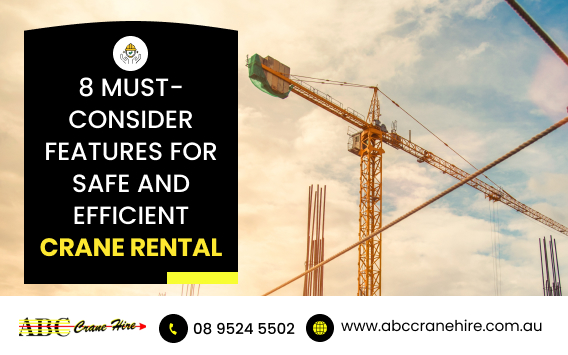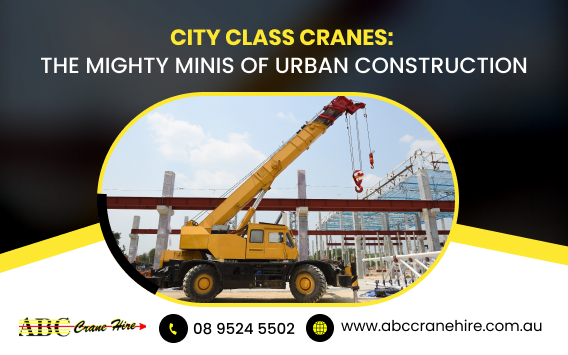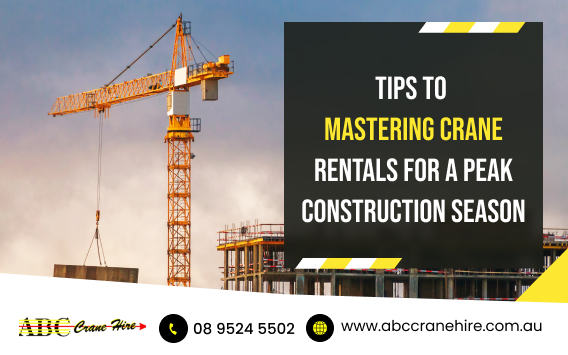Selecting the right crane is a critical decision that can impact the safety, efficiency, and overall success of your project. There are various types of cranes available, and each one is designed for specific tasks and conditions. In order to choose the right crane type, you need to consider some important aspects such as project requirements, budget, safety parameters, and so on. Expert project managers always take the help of crane rental services to decide on the best crane type and hire one accordingly. However, it is always better to do your own research, discuss with the rental company, and then make an informed decision.
1. Understand Your Project’s Requirements
In order to choose the right crane, you first need to understand your project’s specific requirements. You should consider the following factors:
- You should determine the maximum weight that cranes need to lift. Choose a crane that can efficiently handle the required load without exceeding its capacity.
- Next, you need to consider the required working height and horizontal reach. It can help you choose the crane with the right boom length and lifting height.
- The time required for your project can also influence the choice of crane. Short-term projects generally require a different type of crane than long-term ones.
- Analyse the site conditions, especially the terrain, space availability, and access points. If your project site includes challenging locations, opt for cranes that are designed for rough terrain.
- Also, you need to check weather conditions, wind speed, and temperature variations, as all these factors can greatly affect crane stability and performance.
2. Know Commonly Available Crane Options
There are various crane options available today; each is designed for a specific purpose. The most common crane types are:
Mobile Cranes
These flexible cranes are easy to move to different job sites. There are several variations of mobile cranes available, such as all-terrain, rough-terrain, and truck-mounted types.
Tower Cranes
These cranes are generally used in high-rise construction. These cranes are stationary and provide excellent height and load capacity.
Crawler Cranes
Crawler cranes are suitable for heavy lifting in challenging terrain. Such cranes come with caterpillar tracks and ensure stability and mobility.
Telescopic Cranes
They come with a telescopic boom and are suitable for tasks requiring variable reach and height.
Overhead Cranes
Overhead cranes are designed for indoor use and are commonly used in factories and warehouses for material handling.
Loader Cranes
Loader cranes are integrated with trucks and are used for loading and unloading cargo.
Each type of crane comes with its own strengths and limitations. So, analyse your project needs and then choose the right one.
Essential Safety Considerations
While selecting the right crane type, don’t forget to consider important safety factors. Project managers need to ensure the safety of workers and the surrounding environment.
- You should ensure the crane operator is properly trained and licenced.
- The crane should be equipped with essential safety features such as load limiters, anti-two-block systems, and emergency shut-off switches.
- Access the job site in advance, find out potential safety hazards, and enable the required safety protocols. Also, clear the area of obstacles and ensure proper signage and barriers.
- You should also pay attention to wind conditions, as high winds often affect crane stability and safety. Also, some cranes have wind speed restrictions.
3. Consult with Experts
When it comes to selecting the right crane for your project, it’s always wise to consult with experts. You can consult with crane operators, engineers, and a reliable crane rental company. You should gain valuable insights and then easily make an informed decision. Apart from this, you should also reach out to regulatory authorities to clarify regulations and permitting requirements. If you hire cranes from rental companies, you don’t need to directly handle regulations and permit matters.
4. Plan for Contingencies
Even with careful planning, unforeseen occurrences could happen. For this reason, having backup plans ready is important. If the initial choice is unavailable or encounters problems during the project, think about what other options or cranes can be utilised.
Evaluate all the data you have acquired, including project specifications, safety considerations, budgetary limitations, legal requirements, and professional advice. Keep a clear record to keep the entire process hassle-free, and explain why a specific crane was chosen for the project.
Conclusion
Hiring the right crane can ensure smooth progress and safety for your project. If you are not well-versed in the specifications of cranes, take the help of a reliable crane rental service. It will analyse your project requirements and then suggest a suitable crane that can satisfy all your requirements. ABC Crane Hire is a trusted crane rental provider with years of experience in this field and helping numerous industries. Whether you need a small mobile crane or a giant one, just let us know, and we will arrange an efficient and well-maintained crane for you. To hire a crane, you can call us at (08) 9524 5502 or simply submit our quote form.




